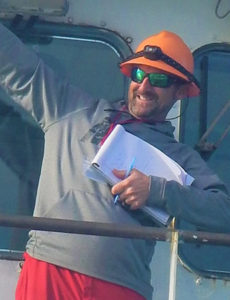- August 18, 2020
- Appraisal, Hull & Machinery, Marine News
- Modern Marvels Meets Deep Sea Salvage
Last September, the Korean cargo ship Golden Ray capsized outside of Brunswick, GA with over 4,000 cars on board. After months of preparations, Versamarine’s heavy lift vessel VB-10,000 will soon cut up and remove the Golden Ray from inside St. Simons Sound.
While wreck removal is currently postponed for hurricane season and COVID-19, DLS Hull and Machinery surveyor Kenner Hendrix traveled to Fernandina Beach, FL to perform a survey on the VB-10,000 and shared details of Versamarine’s heavy lift vessel.
“I recently had the rare opportunity to survey a true modern marvel of engineering. The VB-10,000 is a 10,000-ton design capacity salvage rig designed to decommission oil platforms and is currently scheduled to conduct the Golden Ray wreck removal.
The VB-10,000 consists of two deck barges that are 280’ x 72’ x 20’ which are significantly large barges standing alone – each have a helipad on top of a two or three level deckhouse. The two barges are connected by a 255’ high arch-shaped truss system constructed of 55” diameter heavy wall pipe with a 166’ clear opening between the hulls, creating a massive 300’ square footprint. From the top of the structure, I was able to view downtown Jacksonville to the south, I-95 to the west, and Brunswick, GA to the north.
The two trusses on the VB-10,000 are attached to the deck barges in such a way that the barges can fully articulate independently, enabling this massive heavy lift vessel to operate in seas of up to a surprising 6-8 feet. While the rig has the capacity to remain on station via eight omnidirectional thrusters which telescope out from the hull bottom, the shallow depth at the wreck site won’t allow the thrusters to be used. Instead, the rig will remain on station using a four-point anchor system.
Once operations resume on the Golden Ray wreck removal, the VB-10,000 will use 400’ sections of chain to saw the 660’ ship into eight sections which will then be lifted onto barges and carried away. The job is expected to take roughly two months to complete.”











